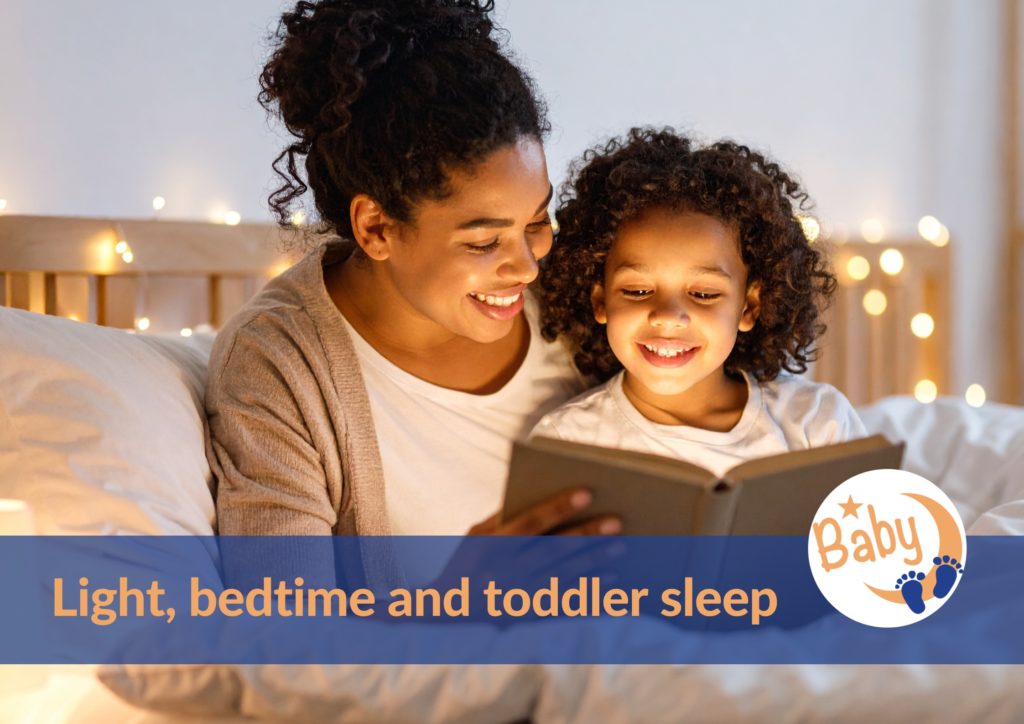Imagine this…
It’s 11 PM and your toddler is still awake. You’ve tried all the tricks — extra bedtime cuddles, another book, even the “just one more sip of water” routine. But nothing sticks.
Here’s the thing most parents don’t realize: light (and yes, those “innocent” bedtime screens) might be the hidden reason your child goes to bed sooo late and why his sleep feels so all over the place.
Why light is such a big deal
Our little ones are wired with a natural body clock — the circadian rhythm. And that clock doesn’t listen to us, it listens to light.
When your toddler gets bright morning light, their brain gets the signal: “Time to be awake now… and yes, I’ll save sleepiness for later tonight.”
When evenings stay too bright, or screens blast that blue light, their body goes: “Oh, we’re still partying? Cool, no sleep (hormone) yet! Let’s have another shot of “coffee” (aka cortisol)”
When bedtimes jump around on weekends, the body clock throws up its hands and says: “I give up, I have no idea when I’m supposed to sleep.”
Real talk: the screen trap
I get it — sometimes putting your toddler in front of the TV is the only way you can brush your teeth in peace. But even a “quiet cartoon” right before bed can push bedtime later, make sleep lighter, and cause more night wakings.
It’s not about guilt — it’s about awareness. Once you know screens have this effect, you can swap them for calmer, bonding and more sleep-friendly activities (and avoid the 3 AM dance party).
The little mistakes we don’t even notice
- Overhead lights blasting bright white until bedtime.
- Closed blinds in the morning (no sunshine = no strong sleep signal).
- Screens before sleep or during dinner.
- Letting bedtime slide on weekends (and paying the price Monday morning).
These aren’t “bad parenting” moments — they’re just easy-to-miss habits. And the good news? They’re also the easiest to fix.
What actually helps (without overcomplicating life)
- Start the day with light. Open curtains, step outside, even just on the balcony. Morning light is magic for sleep.
- Keep evenings dim & warm. Think cosy lamps, fairy lights, or electric candles instead of blinding LEDs – simulating the sunset inside your home.
- Screens off at least 2 hours before bed. Replace with bath, massage, reading, drawing, playing on the carpet, or just cuddling.
- Stick to your routine. Even on weekends, try not to shift bedtime and wake time more than 30 minutes. Your toddler’s body clock loves predictability.
Final thought
If you’ve been blaming yourself for your toddler’s broken nights — stop right there! So much of sleep isn’t about doing “more” as a parent, it’s putting the puzzle piece in the right place. Light is one of the most powerful — and overlooked — tools we have.
So tomorrow morning, open those blinds wide and start the day with a song. Tonight, dim the lights, cuddle more and put the screens away a lot earlier. And notice how, step by step, your child’s sleep (and your nights) start to feel calmer, easier, and more predictable.
Because you deserve rest just as much as your little one does.
When to look deeper
If you’ve tried all this and your toddler still wakes multiple times every single night, or seems constantly overtired during the day, it might be worth booking a call with a certified baby sleep consultant.
I’d be happy to help. 🤗
